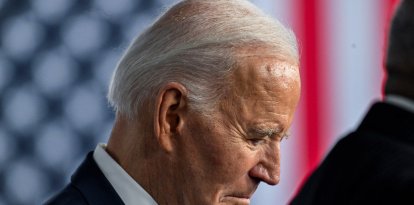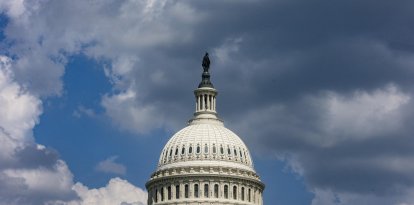Euphemisms, condemning the victim and violence on 'both sides': How the progressive media covered the attack on Trump
Experts, analysts and social media users criticized the coverage of the attack by CNN, CBS, The New York Times and The Washington Post.

CBS News coverage of the attack against Trump
Donald Trump survived an assassination attempt Saturday in Pennsylvania. This is how we have reported on the situation at VOZ with our live coverage. Reading, hearing or watching the coverage by some of the country's and the world's major media outlets, however, might look like something very different.
CNN, for example, first reported that the former president and leading Republican candidate had fallen, headlining, "Secret Service Rushes Trump Off Stage After He Falls at Rally." Senator Marco Rubio shared a screenshot of the article, accompanying it with the words, "Even in a horrifying moment such as this they just can’t help themselves."
Rubio also criticized another headline from the network, in which they claimed that the former president had been "rushed off" the podium during the event. Without any mention, the Floridian politician remarked, that it had been an attack: "Really? No mention of the attempt to kill him?"
The New York Times merited similar criticism. Tom Bevan, president of RealClearPolitics, noted that in the headline of Sunday's print issue the New York paper wrote "Trump Hurt, But Safe, After a Shooting" instead of using "the 'a' word," referring presumably to "assassination." The latter makes it clear that the shooting was an attack on Trump, while in the former, it was not.
The same was pointed out by Brownstone Institute president Jeffrey A Tucker, in a string of New York Times headlines that make no mention that the former president was the target of the assassination attempt:
The Washington Post initially reported, "Trump is 'fine' after being rushed away from rally when loud noises were heard, spokesperson says." That headline, which appeared on the front page and the media outlet's cell phone notifications, mentions no shots fired, nor the blood that was seen on Trump's face. It makes it seem as if there were no shots, only "loud noises."
USA Today also opted for the "loud noises" version:
Something similar happened with the Spanish-language coverage by El País, one of the most widely read newspapers around the world. Hours after the attack, it published a video on X of the moment making references to "some detonations" that forced Trump to "stop and put his hand to his face." There was no mention of blood nor gunshots.
El País also referred in previous posts to a "supposed attack" and "possible gunshots," which resulted in "some blood."
Condemning Trump's reaction
Some journalists condemned the actions of Trump and his team, accusing them of further heating up the situation when it was time to "turn down the temperature."
Jamie Gangel went so far as to criticize the words of the freshly wounded Trump, as he was barely rising from the stage floor after being shot: "After he was hit, Former president Trump got up and said 'Fight, Fight, Fight'. I think what we're hearing from people is 'That's not the message' that we wanna be sending right now. We wanna tamp it down."
CBS' Margaret Brennan said something similar when commenting on the first message from the former president: "I did notice there was no call for lowering the temperature, condemning all political violence." Brennan also noted that Trump, the victim, should have sent a "signal to his supporters as well not to retaliate, or to have any kind of escalation."
Curtis Houck, president of NewsBusters, an organization that analyzes media coverage of current events, argued that CBS journalists were "out of control" asking Republicans to take charge to "lower the proverbial temperature."
Reporter Brennan, contended Houck, "went to a dark place when she suggested Trump supporter could be scheming to commit violence." She also noted that while she and her colleagues criticized the Republican nominee's response, blaming him for having to de-escalate the tension of the moment, they praised that of top Democrats like Nancy Pelosi or Joe Biden.
Houck also noted the hypocrisy in Democrats' criticism of Republicans' anger, because, "how should they feel about a former President and someone millions admire and support nearly being murdered on live TV?"
The rhetoric that the next danger to avoid was possible retribution by Trump supporters made its way through several media outlets, including NBC, as Houck shared on social media.
'Both sides'
Wolf Blitzer, CNN's star anchor, blamed both Republicans and Democrats for the climate of violence.
When Republican commentator Scott Jennings took aim at anti-Trump discourse that equates him with a threat to democracy, Blitzer argued that Trump himself was also speaking "very, very strongly" against Biden.
Jennings replied, simply, "Who's in the hospital?" The CNN reporter then said he agreed that "both sides" should calm things down.
Dana Bash, also of CNN, agreed with his colleague, calling on leaders "across the board" to "tamp things down."
"Breaking-news live coverage can get things wrong in the heat of the moment," argued Tim Graham, an analyst with NewsBusters. "But there's no excuse for partisanship to break out."

























